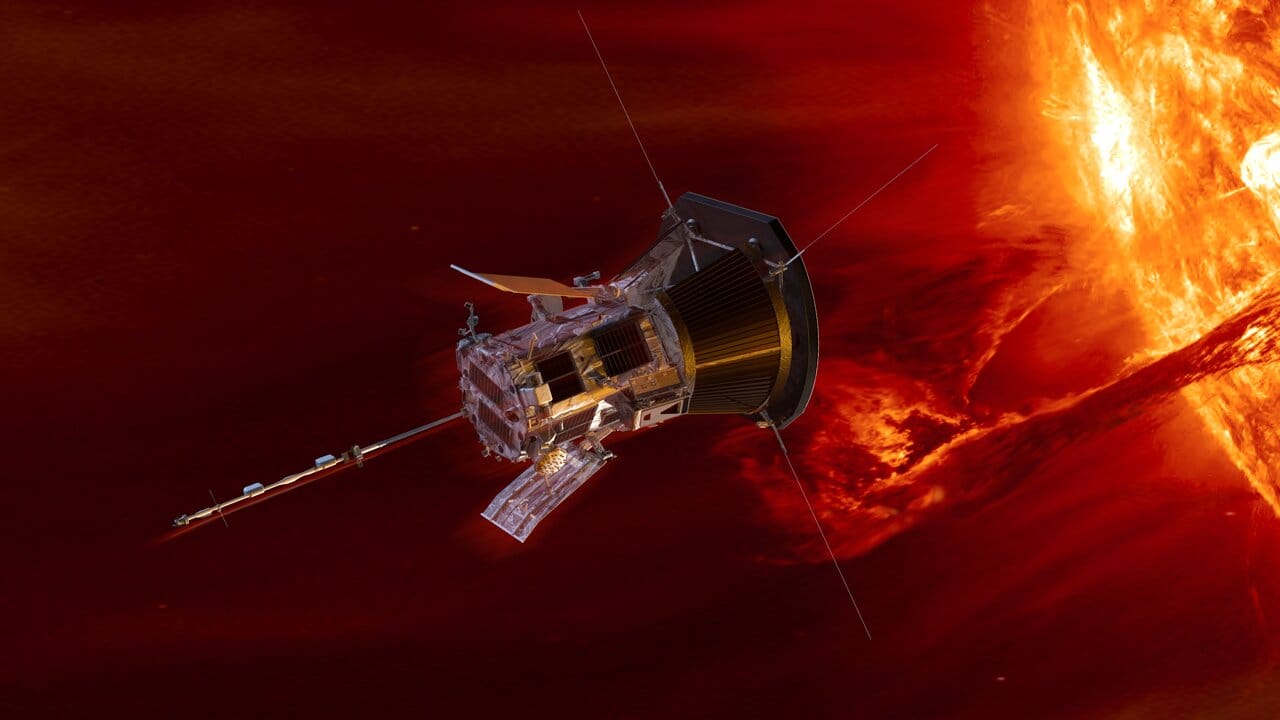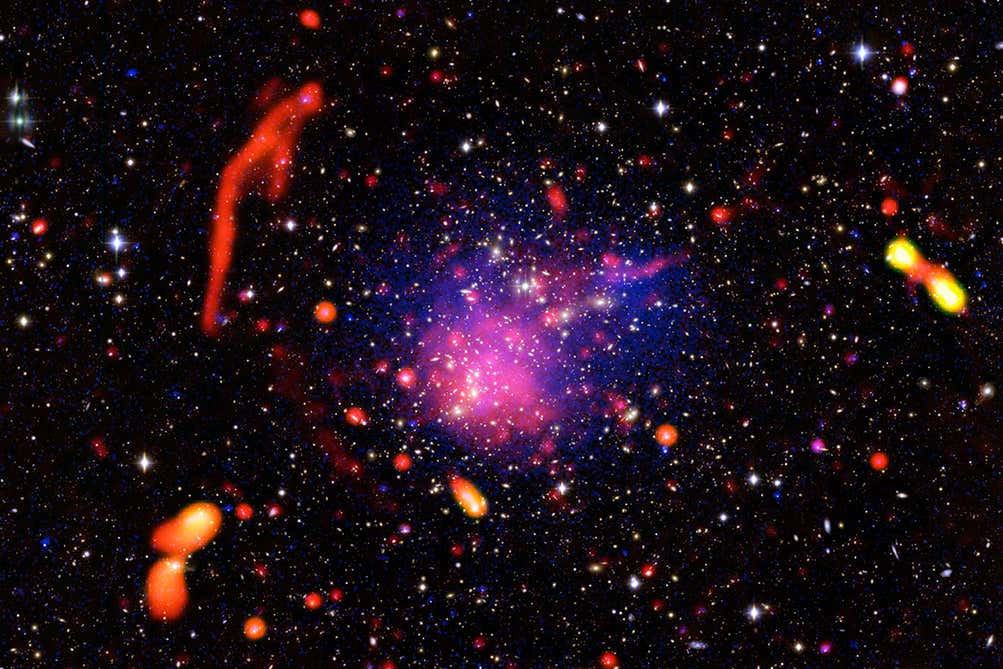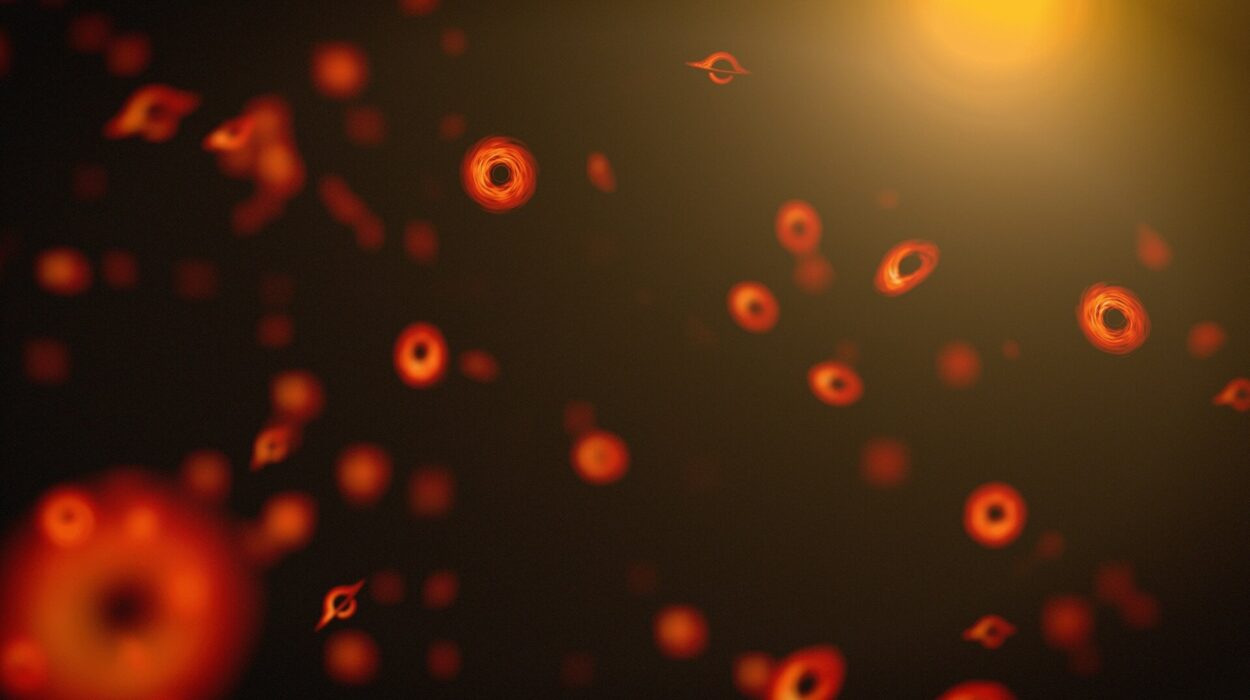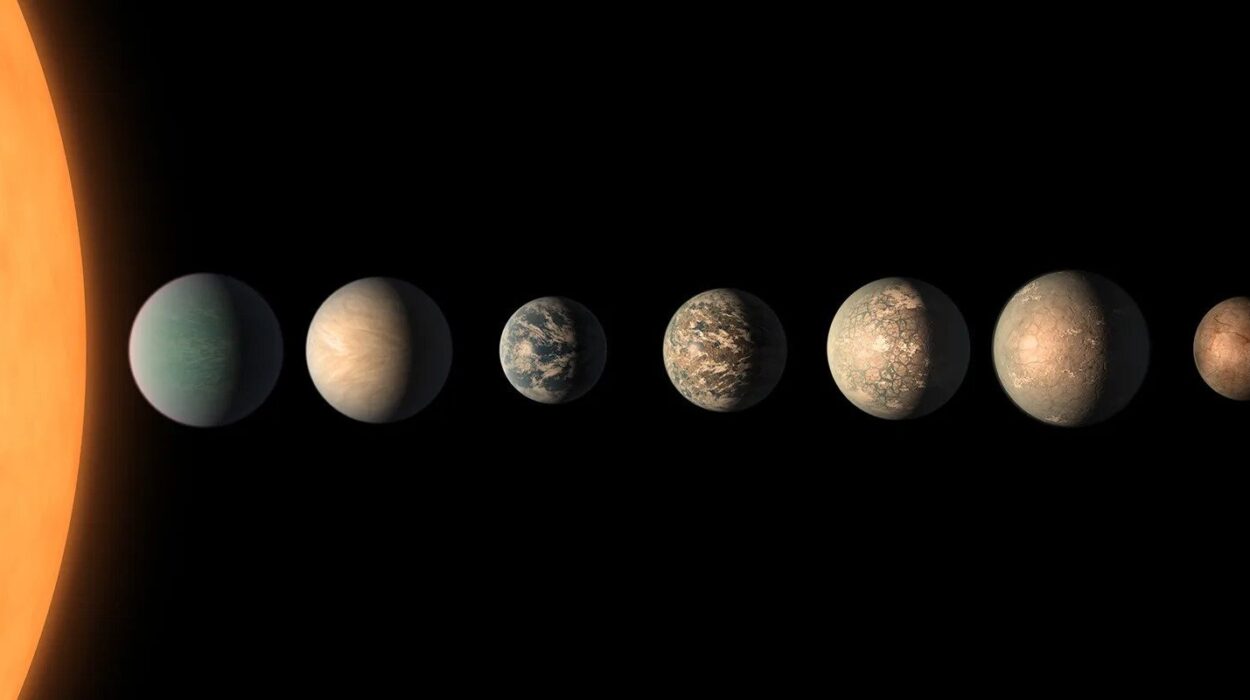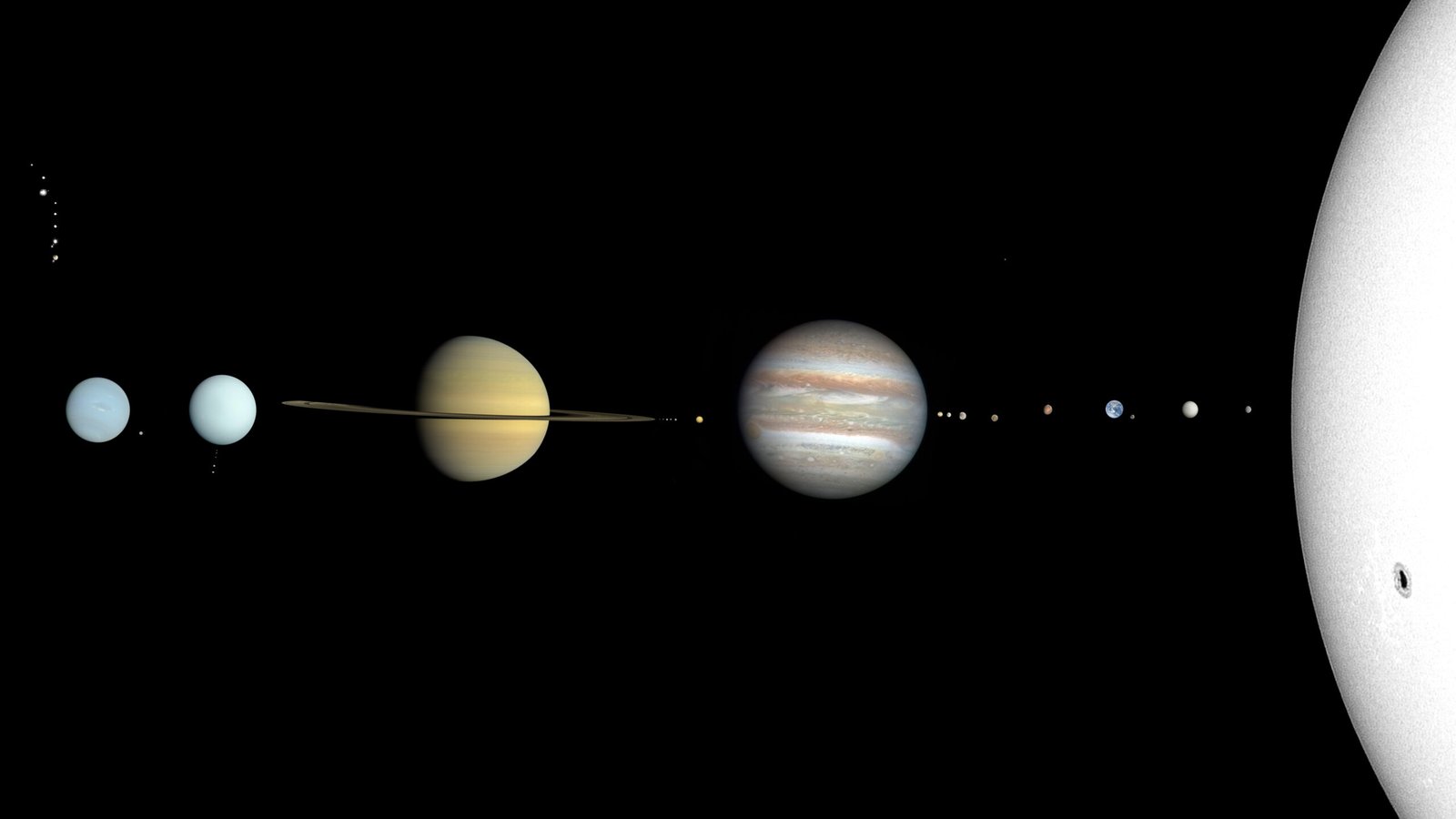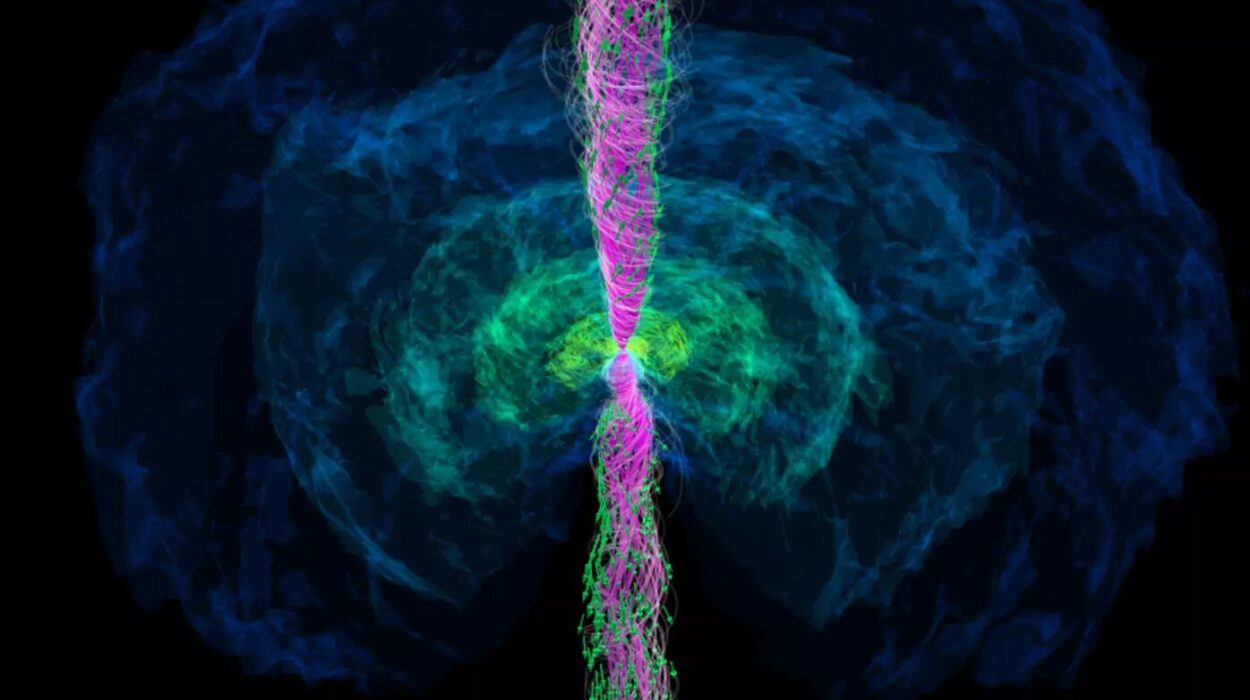NASA’s Parker Solar Probe, a trailblazing spacecraft that has been venturing closer to the Sun than any other human-made object, has made history once again. On December 24, 2024, the probe achieved its closest approach to the Sun’s surface, passing just 3.8 million miles above it—setting a new record. Traveling at an astonishing speed of 430,000 miles per hour, Parker Solar Probe surpassed its previous record and remains on course to make groundbreaking discoveries that promise to change our understanding of the Sun and its profound effects on our solar system.
The probe’s successful passage was confirmed with the receipt of a beacon tone on December 26, 2024, indicating that it had safely navigated the extreme environment of the Sun’s corona and is operating as expected. This historic encounter is just one of many such close approaches Parker Solar Probe will make as it continues its mission to uncover the Sun’s deepest secrets.
The mission’s primary goal is to gather data from an environment no spacecraft has ventured into before, allowing scientists to answer long-standing questions about the Sun’s behavior and its influence on the entire solar system, including Earth’s technological infrastructure and space activities. “Flying this close to the Sun is a historic moment in humanity’s first mission to a star,” said Nicky Fox, who leads NASA’s Science Mission Directorate. “By studying the Sun up close, we can better understand its impacts on the technology we use daily on Earth and in space, as well as learn about the workings of stars across the universe to aid in our search for habitable worlds beyond our home planet.”
Parker Solar Probe has been working towards this historic achievement since its launch in 2018. To place it on the optimal path for this unprecedented mission, the spacecraft used a series of seven gravity-assist flybys of Venus. These flybys served to gradually alter its trajectory, enabling Parker Solar Probe to get closer and closer to the Sun with each orbit. The final Venus flyby took place on November 6, 2024, setting the probe on the perfect elliptical orbit that now brings it within 3.8 million miles of the Sun’s surface every three months.
This unique orbit ensures that Parker Solar Probe can make frequent close passes to the Sun without being exposed to too much extreme heat or radiation. During its closest approaches, the spacecraft’s heat shield, which can withstand temperatures up to 2,600°F (1,427°C), provides essential protection. The shield is made from carbon foam, a material capable of keeping the spacecraft’s instruments at a stable temperature despite the Sun’s intense heat, which can exceed 1 million°F (555,000°C) in the corona. This technological marvel allows Parker Solar Probe to gather data while withstanding some of the most extreme conditions in space. “It’s monumental to be able to get a spacecraft this close to the Sun,” said John Wirzburger, the mission’s systems engineer at the Johns Hopkins Applied Physics Laboratory (APL). “This is a challenge the space science community has wanted to tackle since 1958 and had spent decades advancing the technology to make it possible.”
By flying through the solar corona, the Parker Solar Probe can make critical measurements of the Sun’s atmosphere that will help scientists unlock some of its most enduring mysteries. One of the key questions the mission aims to answer is why the corona—despite being farther from the Sun’s core—appears to be much hotter than the surface itself. Data from Parker Solar Probe will also help scientists trace the origin of the solar wind, a constant flow of charged particles escaping from the Sun, and discover how particles are accelerated to speeds approaching half the speed of light. “The data is so important for the science community because it gives us another vantage point,” said Kelly Korreck, a program scientist at NASA Headquarters and a heliophysicist who worked on one of the mission’s instruments. “By getting firsthand accounts of what’s happening in the solar atmosphere, Parker Solar Probe has revolutionized our understanding of the Sun.”
Already, Parker Solar Probe has made significant discoveries in the short time since its first pass through the corona. In 2021, during its initial encounter with the solar atmosphere, the spacecraft observed that the boundary of the corona is not smooth as previously expected, but instead contains spikes and valleys. It also identified the origin of the mysterious “switchbacks” in the solar wind, which are zig-zag-shaped structures that were first observed in the solar wind decades ago but whose source was unknown until now. These insights are just the beginning of what Parker Solar Probe is expected to uncover as it continues to fly closer to the Sun with each orbit.
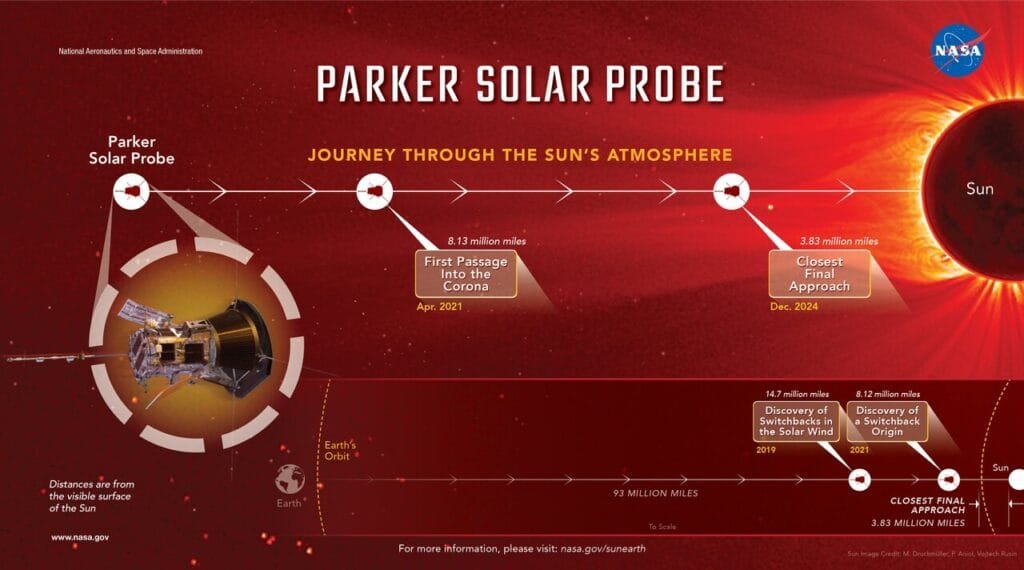
As Parker Solar Probe spends more time in the Sun’s corona, it will gather further data that could lead to a deeper understanding of solar phenomena. For example, the mission is expected to provide more insights into how the solar wind is accelerated near the Sun’s surface. “We now understand the solar wind and its acceleration away from the Sun,” said Adam Szabo, the mission scientist at NASA’s Goddard Space Flight Center. “This close approach will give us more data to understand how it’s accelerated closer in.” These discoveries will not only advance our understanding of the Sun but will also have broader implications for understanding stellar activity in other star systems, potentially aiding our search for habitable planets.
In addition to its solar studies, Parker Solar Probe has made numerous discoveries across the inner solar system. The spacecraft’s observations have provided new insights into how coronal mass ejections—giant explosions from the Sun’s surface—interact with the solar system’s dust, and how solar energetic particles behave. Parker Solar Probe has also captured the first complete image of Venus’s orbital dust ring and observed the planet’s natural radio emissions from its atmosphere, enriching our understanding of Venus itself.
The spacecraft is now in a position to send back the data from its latest solar pass, which promises to provide even more valuable insights into the Sun. “The data that will come down from the spacecraft will be fresh information about a place that we, as humanity, have never been,” said Joe Westlake, director of NASA’s Heliophysics Division. “It’s an amazing accomplishment.” As more data is transmitted back to Earth, scientists will be able to analyze it and continue building a detailed picture of the Sun’s behavior and its influence on the solar system.
Looking ahead, Parker Solar Probe’s next close solar passes are scheduled for March 22, 2025, and June 19, 2025. Each of these passes will bring the spacecraft even closer to the Sun, providing an unprecedented opportunity to study the Sun’s behavior in real-time. These close approaches will continue to fuel our understanding of the Sun’s inner workings, potentially answering many of the lingering questions that have puzzled scientists for centuries.
The Parker Solar Probe mission is a remarkable achievement in space exploration, not only because of the spacecraft’s groundbreaking proximity to the Sun, but also due to the technological advancements that made this mission possible. The spacecraft’s ability to withstand the intense heat and radiation of the solar corona, while still transmitting crucial scientific data, marks a new era in space science. As Parker Solar Probe continues its journey through the solar system, its discoveries will undoubtedly shape our understanding of the Sun, space weather, and the broader universe for many years to come.
